Classic Gear: Roland TB-303 – Every cloud has a silver lining
The Roland TB-303 is a little silver box to get lost in.
Roland’s little silver box became a must-have synth for techno producers looking to add some of that acid magic to their tracks. It’s now fetching crazy prices on the used market – but was it such a failure the first time around?
Roland TB-303
One of the very first synthesizers that I could recognize by sound was the Roland TB-303. A teenage fan of acid house records, I had become obsessed with the gurgling and squelchy tones that I heard in the weird records coming out of Chicago and London. Somehow I found out that it was called a TB-303. That was it. I had to have one.
Define Failure
Introduced in 1981, Roland intended the TB-303 Bass Line – alongside the similarly silver TR-606 Drumatix drum machine – to be part of a rhythm accompaniment system for practising guitarists. Unfortunately, it sounded nothing like a bass guitar so it ended up as a massive failure.
Or so the modern story goes. I’ve never really believed this explanation of events. While it certainly became more popular on the second-hand market, it’s not like the 303 sank without a trace the first time around. It sold around 17,000 units according to internal Roland documents. That’s more than the TR-727, TR-808, TR-909, Juno-6, Jupiter-6, Jupiter-8… the list goes on. Many musicians used it on record as well, including Heaven 17, Orange Juice, American R&B singer Shannon, and about 100 forgotten Italo disco producers.
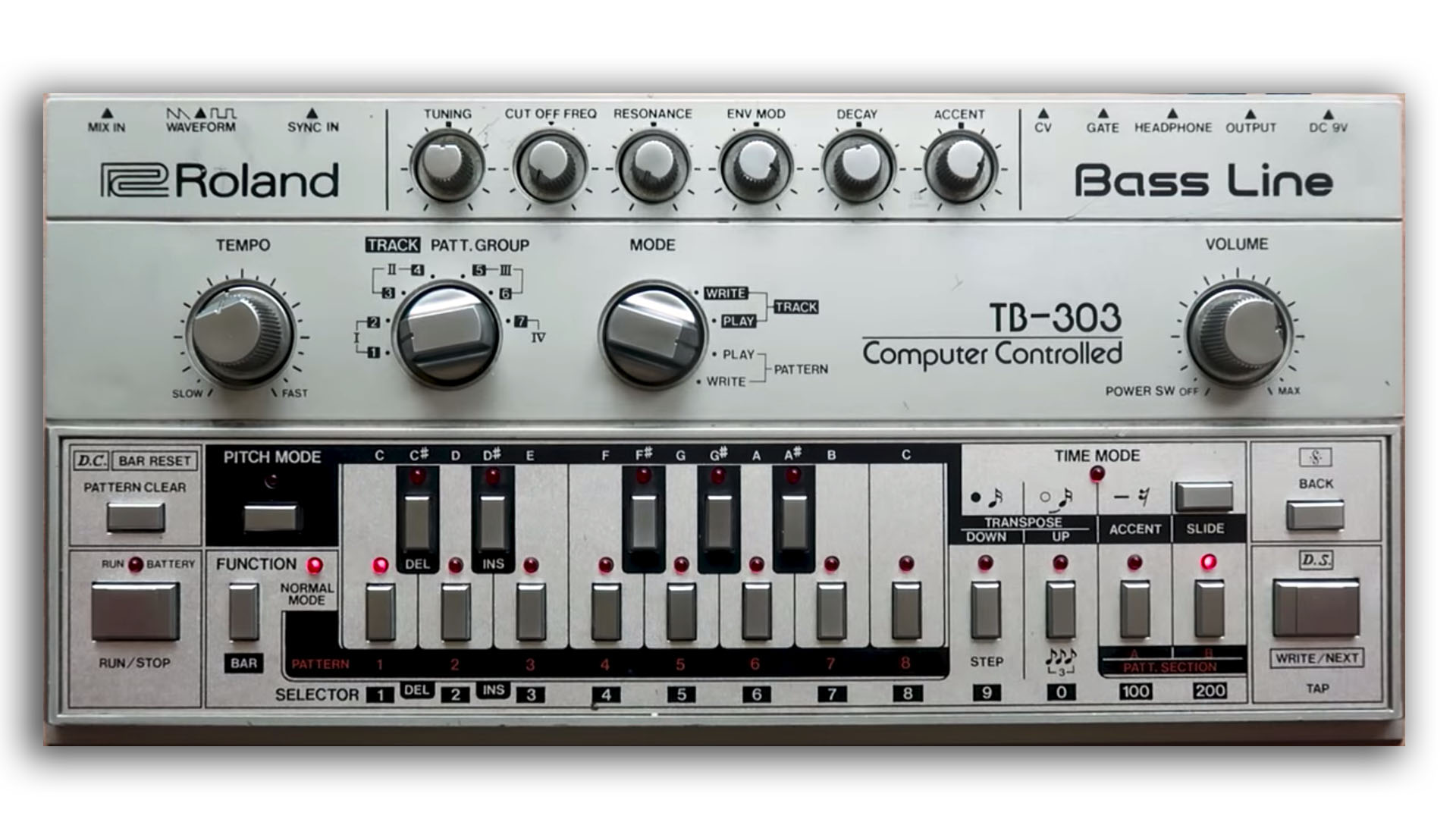
Chicago, Chicago
Of course, things really picked up for the Roland TB-303 when Chicago acid house happened. After buying one cheap, pioneers Phuture set a bassline to a house beat, went crazy tweaking the dials for about 10 minutes, and acid house was born. Desire for the 303 really took off, though, went British producers heard Chicago acid records and put their own spin on it. Now the 303 has moved beyond its original genre boundaries and become a popular sound to use across genres, dance music and otherwise.
Roland TB-303 Synthesis: Keep It Simple, Acid
There are essentially two keys to the 303’s appeal: the acidic sound and the unusual sequencer. In terms of synthesis, it’s extremely simple: There’s a single oscillator with either biting sawtooth or hollow square wave. Next is the famous diode ladder filter. Not 18dB as is often reported but 24dB and it’s the squelch and bite of the filter resonance that really gives the little synth its sound. After that, you get precious few more knobs: envelope modulation for the filter, a simple decay, accent control and tuning. Roland was going for a bass guitar sound, after all, not a particularly complex sound in terms of synthesis.
The second secret to the success of the Roland TB-303 was the sequencer. A maddening step affair, you entered notes, then octaves via transpose buttons, accents, slides and rests. It was the addition of thumping accents and tie-like slides that gave the 303 its serpentine sequences. Some producers were real masters of 303 programming like Mad Mike Banks from Underground Resistance. Most, however, just mashed buttons randomly until something cool came out. This was a big part of the psychedelic sound of the original acid house records, with things like music theory and scales ignored in favour of trippy sequences.

A 303, A 707 And A Boss Digital Delay Pedal
I bought my 303 from a friend, an electronic musician in San Francisco, for $50 in 1992. Even adjusted for inflation, that’s only around $100. Not bad. At first, I couldn’t even sync it to my other gear though. Since there was no MIDI, only DIN sync, Roland’s proprietary pre-MIDI sync protocol, I would just sit for hours, making ambient acid jams with lots of long delays courtesy of a used Boss digital delay pedal.
Things really picked up when I found a TR-707 drum machine at a local used musical instrument shop. Because it had both MIDI and DIN sync, I could finally get the 303 working with my other gear, a Roland S-50 sampler and Alesis MMT-8 sequencer. However, the 707 had to be the master of the whole setup, which meant pretty loose MIDI timing, but hey, I finally had a 303 running with a drum machine.
Next, I recruited a friend and the 303 Terrorists were born (not the name I’d choose in 2023, to be honest, but these were pre-9/11 days). We put out a few records and played some gigs around the San Francisco Bay Area rave scene for a few years until one month I needed to pay the rent and sold it back to the same guy I bought it from for $100. Cue sadness and tears on my pillow.
ReBirth of the Roland TB-303: Modern Remakes, Clones and Software
These days I’m not sad, however, because I have a Behringer TD-3, which sounds close enough and has the Wild Wild West sequencer intact. It’s perfect for nostalgia-fueled jams with my TR-8S on the 707 setting. You don’t have to be an ageing ex-raver to dig the modern 303 clones. Along with the regular Behringer box, there’s the TD-3-MO, which extends the sound with Devilfish-style mods. Cyclone Analogic makes the TT-303 Bass Bot V2, which doubles as a great place to keep hard candy. Lastly, Roland has two modern recreations, TB-03 and TB-3, although these are no longer in production. It’s a great time to be an acid fan.
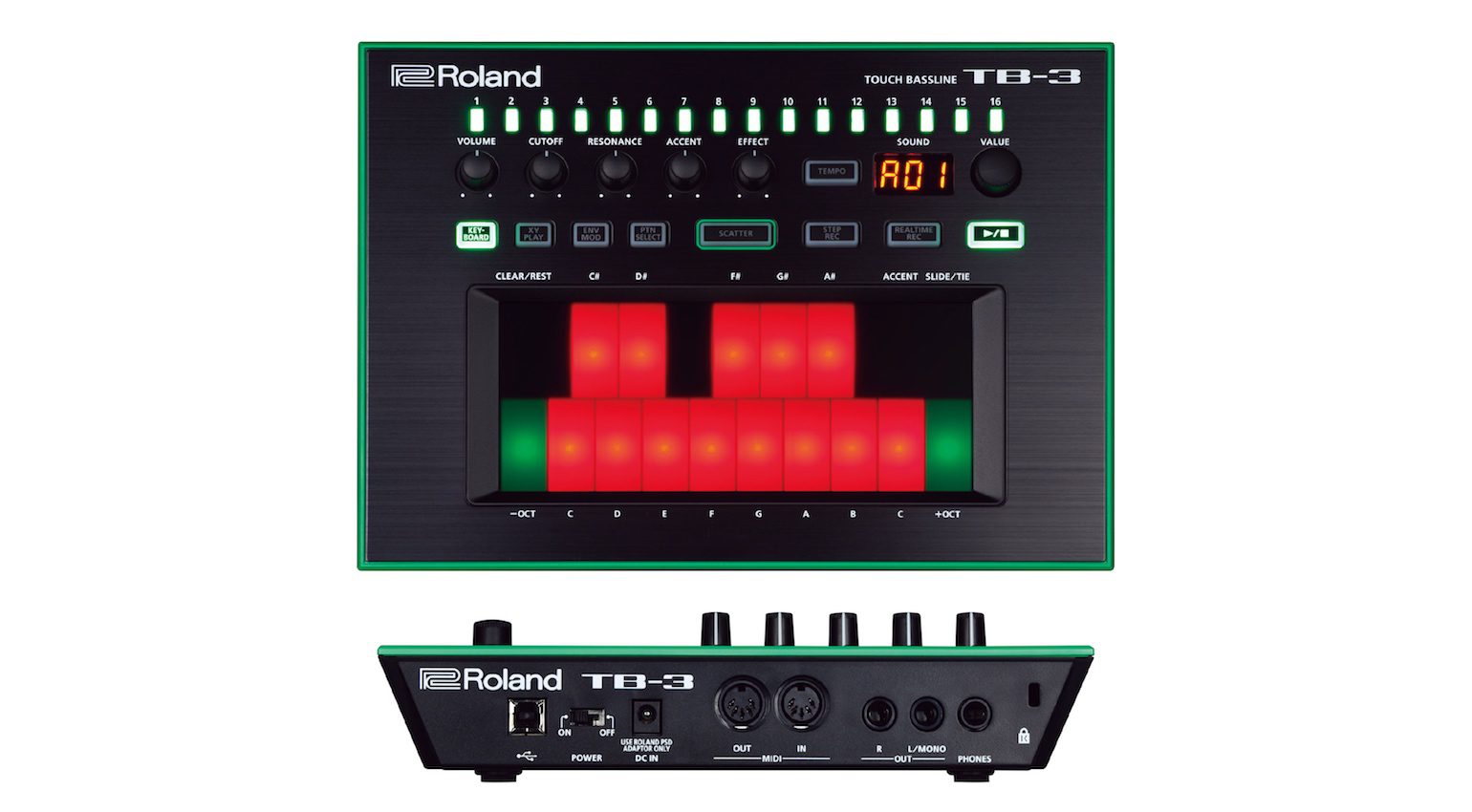
If 303 software is more your thing, you’re also in luck. There are currently at least four professional emulations on the market, including Roland’s own Cloud TB-303, Arturia’s Acid V, Phoscyon 2 from D16 Group, and AudioRealism’s Bass Line 3. I have yet to try Bass Line 3 but I have all of the others in my digital arsenal, and love them all for different reasons.
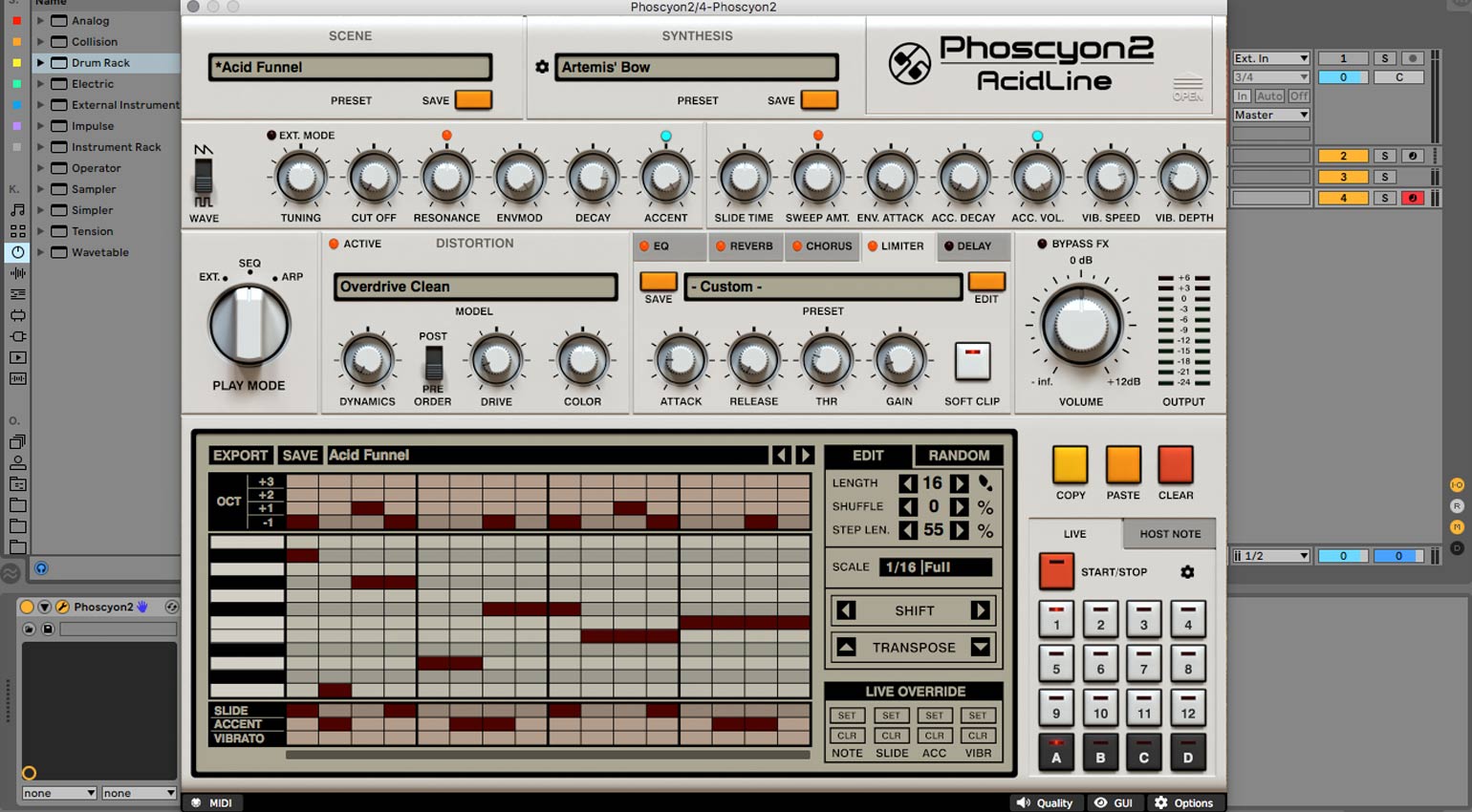
Since we’re talking about Roland TB-303 software, I really can’t close without mentioning Propellerhead Software’s ReBirth RB-338. For many younger producers, this 1997 release was their first opportunity to interact with a 303-style instrument and so holds a special place in their hearts. For me, it was the first time that I became aware of the power of computer music software, and that this would be a force to be reckoned with someday. Check out the archived ReBirth Museum for a trip down memory lane and a download – if your computer is old enough, that is.

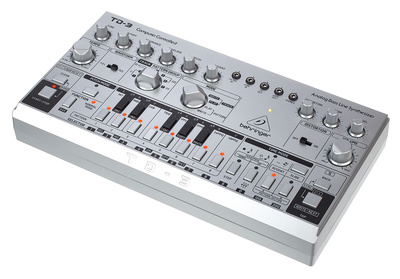

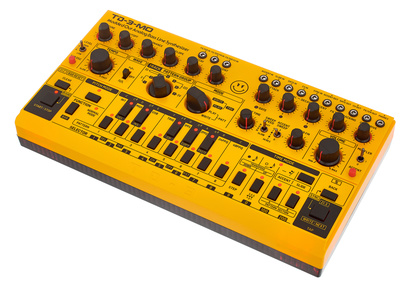

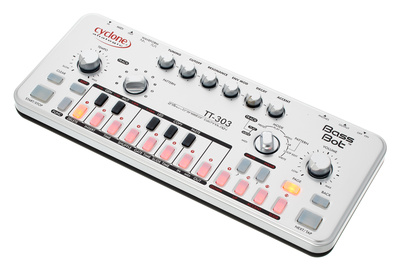

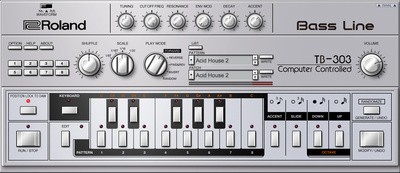

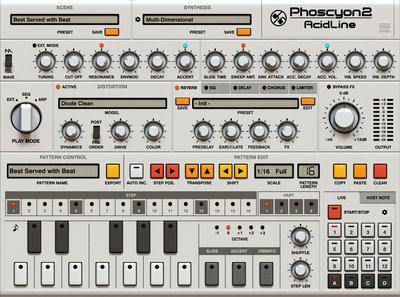
More Information
- All about Roland
Videos
One response to “Classic Gear: Roland TB-303 – Every cloud has a silver lining”

 4,5 / 5,0 |
4,5 / 5,0 | 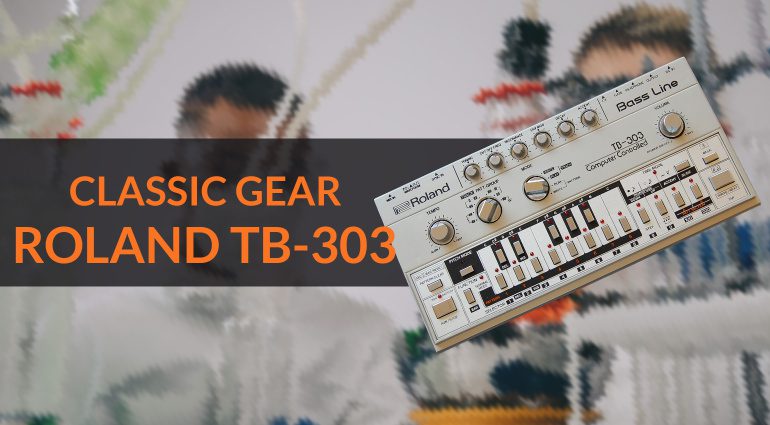


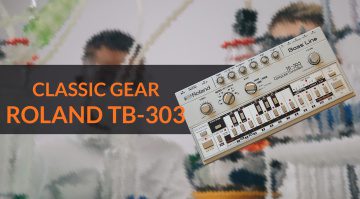

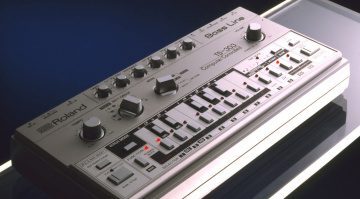
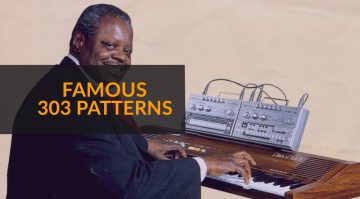

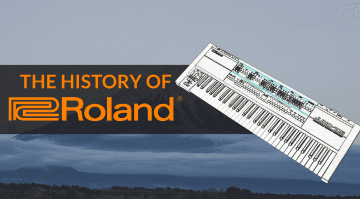

There’s also the Korg Volca Bass that has 3 simultaneous acid riffs, and the Nubass, that has a tube osc and growls a lot. Most decent synths and grooveboxes will also do a 303 approximation. There’s really no reason for anyone not to be in orbit in 2024 😄